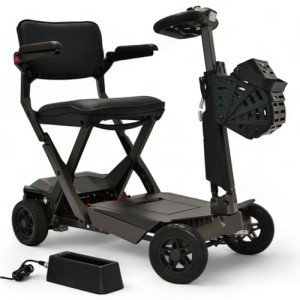12 Companies Are Leading The Way In Mobility Scooter
A Comprehensive Guide to Buying a Mobility Scooter
Mobility scooters have become a crucial tool for lots of people aiming to improve their self-reliance and mobility. With a vast variety of designs and functions available, selecting the best mobility scooter can be intimidating. This post supplies a useful guide to help consumers browse their options, evaluate their requirements, and make an informed purchase.
Comprehending Mobility Scooters
Mobility scooters are electric cars designed for individuals who experience mobility obstacles. They are particularly helpful for senior citizens, those with disabilities, or individuals recovering from injuries. Mobility scooters can vary widely in terms of style, functions, and pricing.
Types of Mobility Scooters
Before starting a purchase, it's vital to understand the different types of mobility scooters offered:
Three-Wheel Scooters:
- Generally more maneuverable in tight spaces
- Lightweight and portable
- Ideal for indoor use
Four-Wheel Scooters:
- Offer higher stability and balance
- Suitable for outside use over various terrains
- Usually have a longer battery life
Foldable/Portable Scooters:
- Designed to be quickly carried and stored
- Can often suit the trunk of a car
- Suitable for those who travel frequently
Sturdy Scooters:
- Built to accommodate larger people
- Often included more robust functions for outdoor usage
- Typically geared up with bigger batteries for extended variety
Aspects to Consider When Buying a Mobility Scooter
1. Weight Capacity
Pick a mobility scooter that can support the user's weight. Many scooters have a weight limitation ranging from 250 to 500 pounds. It is crucial to make sure that the scooter can accommodate the user conveniently.
2. Variety and Battery Life
The range is how far the mobility scooter can take a trip on a single charge. Normal ranges differ in between 10 to 30 miles. Consider the user's day-to-day activities and choose a scooter with a suitable variety.
3. Scooter Dimensions
Consider the size of the scooter, including its weight and dimensions. A more compact scooter might be ideal for narrow corridors and tight areas, while bigger models provide additional stability and comfort.
4. Terrain Capability
Evaluate where the scooter will mainly be used. If the user plans to take a trip mostly on pavement, a lightweight model might be adequate. Nevertheless, if the user requires to pass through gravel or irregular surface areas, consider a four-wheel scooter constructed for off-road usage.
Leading Features to Look For
Convenience
- Adjustable Seats: Look for scooters with cushioned and height-adjustable seats to ensure comfort during travel.
- Armrests: These boost security and assistance while navigating.
Security and Visibility
- Headlights and Taillights: Essential for nighttime use.
- Turn Signals and Reflectors: Improve presence and safety while on the road.
User-Friendly Controls
- Joystick or Drive Controls: These ought to be intuitive and easy to manipulate.
- Easy-to-Read Displays: A control board that shows battery life, speed, and distance can improve the user experience.
Extra Features
- Storage Compartments: These use added benefit for bring personal products while on the go.
- Weather Protection: Consider models with rain covers or windscreens if utilized in variable weather.
Expense Considerations
When budgeting for a mobility scooter, rates can vary anywhere from ₤ 500 to over ₤ 5,000 depending upon the model, functions, and brand. Additional costs may include:
- Extended Warranty: Protects against flaws and can save money in the long run.
- Accessories: Optional functions, such as upgraded seats, lights, or storage solutions.
Function
Expense Range
Standard Models
₤ 500 – ₤ 1,500
Mid-Range Models
₤ 1,500 – ₤ 3,000
High-End Models
₤ 3,000 – ₤ 5,000
Financing Options
Numerous retailers use funding plans, and some city government efforts may supply grants or support for those in need. Examine best mobility scooters with neighborhood resources or mobility service companies.
FAQs about Buying a Mobility Scooter
What is the difference in between a mobility scooter and a wheelchair?
Mobility scooters are motorized and allow users to navigate separately, while wheelchairs may need physical help or manual operation.
How do I maintain a mobility scooter?
Regular maintenance involves examining battery life, cleaning up the scooter, and checking tires and brakes. Always refer to the user manual for particular guidelines.
Can mobility scooters be used indoors?
Yes, many designs are developed for both indoor and outdoor use. However, three-wheel scooters tend to be better fit for indoor navigation due to their tighter turning radius.
Are mobility scooters covered by insurance coverage?
Some insurance prepares cover a portion of the expenses for mobility scooters if they are considered clinically needed. Contact your company for particular details.
How fast can a mobility scooter go?
A lot of mobility scooters have an optimal speed ranging from 4 to 8 miles per hour. However, the suitable pace might differ depending upon regional policies.
Acquiring a mobility scooter can substantially boost one's self-reliance and quality of life. By comprehending the types, functions, and costs related to mobility scooters, potential purchasers can make well-informed choices that suit their needs and preferences. Customization and extensive research are essential to guaranteeing complete satisfaction with this important investment.
